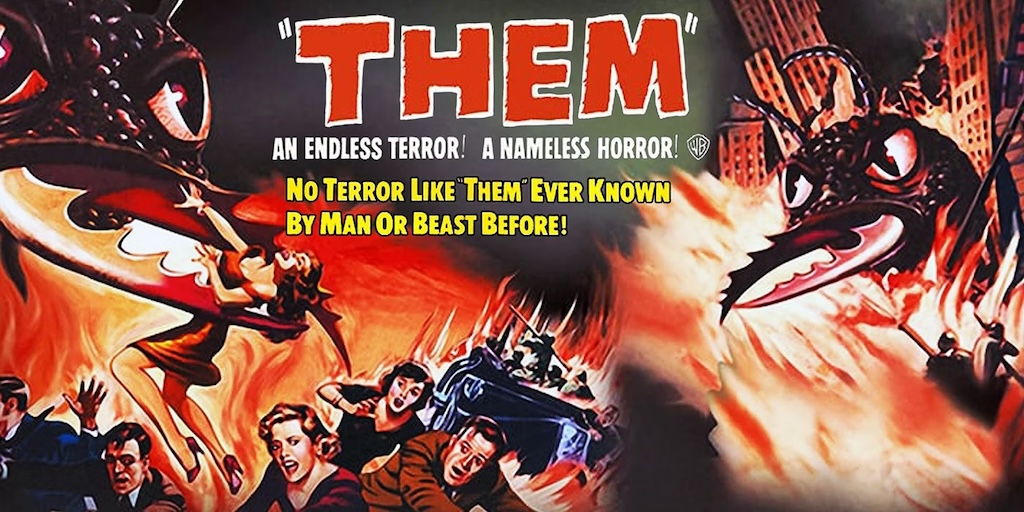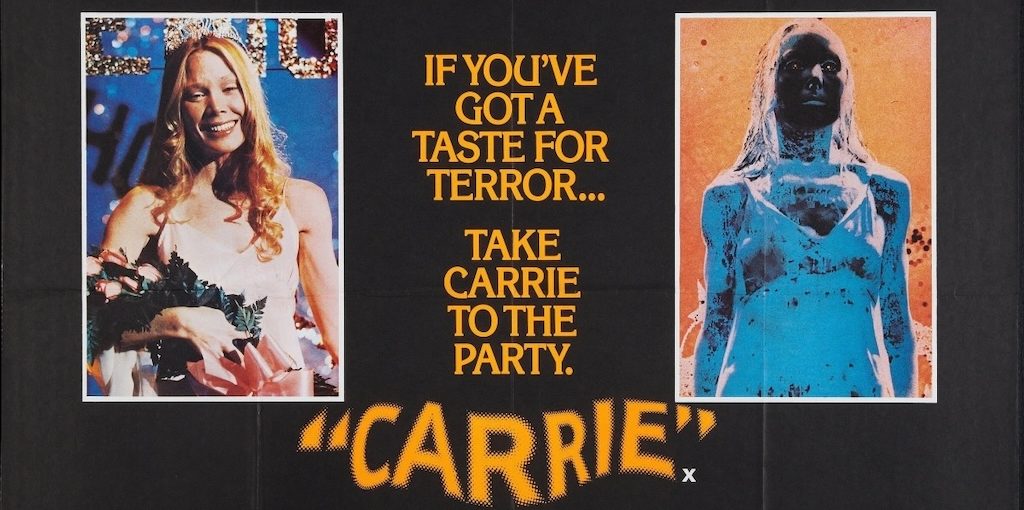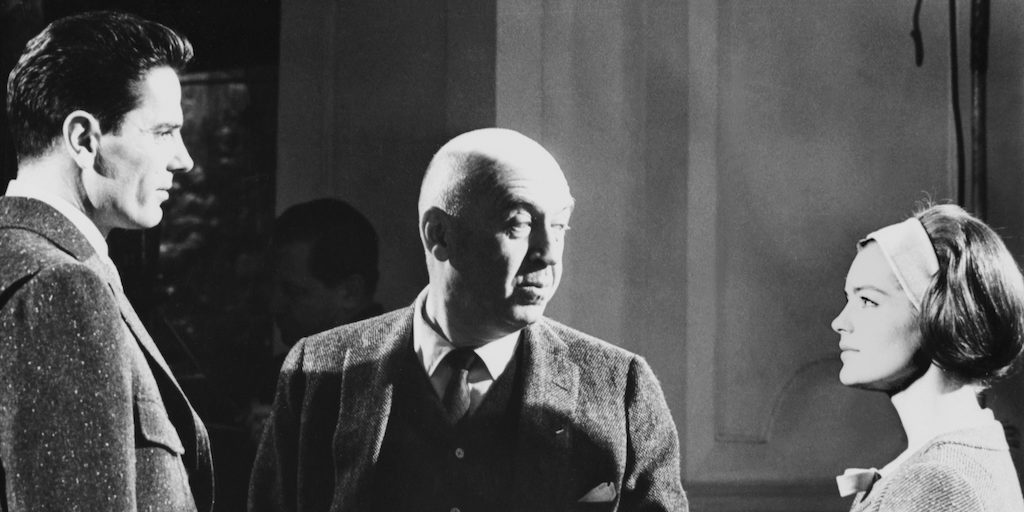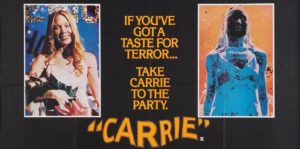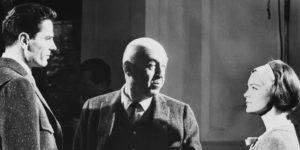“Intimacy with the model demands more attention,
but conceives a larger familiarity.
Every stroke comes out one at the time, taking its place
in the physiognomy desired to be reproduced,
like the successive apparition of stars in a clear night”
Saint-Beauve, About Diderot
The “American” period ––or rather Hollywood period–– of Fritz Lang is one of the most superficially studied or analyzed. Since the early and already ancient dark anti-Hollywood legend that took Lang’s films shot there as an example of an alleged decadence and decline at the hands of the lone satrapy of ignorant producers… and… enough of this nonsense.
As a supposed transatlantic compensation, or rather cisatlantic, we have the profusely illustrated and coffee-table modeled volume by Lotte Eisner, also author of a helpful semi-classic of critical pionerism, published under none other title than “The Diabolical Screen”. This was only an assortment of exclamations and vocatives of sluggish romanticism, proper of the Weimar republic and filled with hyperborean darkness and limited capacity for symbolic comprehension. The one dedicated to Lang, aside from her notable edition as disegno, is of a merely encyclopedic and decorative value. Frau Eisner, in any case, can endure some praise for having assisted in the rescue of some lost copy of these expressionist films and having them programmed at revival houses; aside from contributing to the foundation of such ominous places of gathering, prone to the chit-chat of collectors and exchanges between the hoarders of newspaper clippings.
We have also the opuscule of a title, often repeated ––even for this local event––, due to Peter Bogdanovich, which is “Fritz Lang in America”, based on interviews and some few insights. As in his other books, its author must be praised, just like that, for taking care of the cleaning and curing of some of Hollywood’s classical auteurs that are still alive, and even active around then, that have fallen in the dubious hands of that little gang of improvised Parisians who had the purpose, nothing more, than giving a voice to Hollywood cinema’s expressive “ingenuity”. Which, on our part, we have called “kasparhauserzation” in “The Concept of Cinema” and we quote from said book:
“Typical procedure of European culture starting from modernity through which it is pretended to be the rhetor of that which is American, the guide or granter of the word to the supposedly American atavistic, unconscious or “primitive”. This procedure is, at the same time, pronouncedly characteristic of a certain tendency in the French culture.”
Bogdanovich’s interview trusted the lowly Proustian reminiscences by Lang; and though modesty was never his strongest suit ––Why should it be?––, it was the placid twilight recherché that made him review some of his films with some content or posed disdain.
Shortly before, and thanks to that Paradise or Aleph of the universal image called YouTube, we could see the film where William Friedkin interviews Lang at his home shortly before his departure from this valley of tears, more and more populated by Doctors Mabuses.
Lang is clear in one concept. “Why talk about my films once I already made them?” We add on our part that Cinema, what we call “The Concept of Cinema”, constitutes a complex and still little understood anomaly in the “evolution of the arts”; to employ the beautiful title of one the books by our master Gillo Dorlfes.
The why is or should be simple. Cinema, beyond the already moldy discussions about whether the director is also the author ––a thing easy to establish nowadays––, carries something much more complex in its making. The expression-intuition dyad due to the aesthetics of Benedetto Croce, which according to this author can summarize the entire artistic fact, is more than ever realized ––de facto, we can say–– in Cinema. This effective realization, that Croce himself and his followers saw in figurines and in well versed and bulky volumes to attempt explaining or even make explicit, can be seen in cinema and its concept through the mise-en-scene. There, every preexistent material ––the screenplay, for example––, becomes a motive for an operation in which we can find ––by locating a single detail on the sets, the position of an actor, coming up with a light scheme and its shadows, whatever–– this passage of intuition (What is this script trying to tell me?) to his form of sensible manifestation, but with a full mimesis; such is the case of cinema. For his expression, to take to an “outside”, comprehensible and visible to everyone (starting with the maker himself), that which it was “felt”. Taking what was intuited towards that visible and sensible content that is expression.
It is, or should it be, simple to understand as well that a shot and its relationship with another, that is the editing of a film, and its corresponding sense, are lent more easily to comprehension than a poetic writing style, like a metaphor, or regarding a tonality, a curve or a melody.
But the most melancholic tedium assaulting the film auteur when he has to re-explain even one shot in any of his films, especially when it is finished, put on the scene decades ago, is more than comprehensible. It is there. It exists. It is visible. It is measurable. And in a plane of understanding or intuition, even phenomenological, it is the same for every contemporary or future viewer and so on. Of course that it is the same when it comes to his vision, not when it comes for his insights or comprehension. But be it as it may, that foreground of understanding presents itself in a film like it never could in the text of a poem, a short story, a drama or a tragedy. Not to mention a musical composition. Possibly, if it were once in the badly named “plastic arts”; sculpture, painting and even architecture. But that was possible when the Western European world had what it was called a “unified sensibility”. That is, a shared vision of the world. A joint vision. By mutual agreement. Besides the irrefutable fact that the vast majority of such artistic creations could be found for a long time buried in museums; including churches and cathedrals that ––alas–– are already appendicular extensions of those museums.
Cinema is and will be another thing. Even though that its critical evaluation isn’t necessarily in accordance to its theoretical comprehension. The absolute unity of the intuition-expression dyad presents itself by paying a paradoxical toll consisting in that the full-visual intuition, which is pure and absolute, doesn’t match concurrently with an intellectual comprehension, not even a mediate one. This mediation, the theory, that is its “theorein”, its active contemplation, entails a spiritual movement and moment divorced extremely from this vision-prime intuition.
And by a successive paradox, the mediatic ease of having since the past few years to our permanent disposition copies of all ––or almost all–– possible films within reach, has not improved, but has worsened the understanding of the cinema-fact; because the mental laziness makes a perfect match with technical ease.
This theoretical-scientific prologue could be the always necessary appetizer moment of all posterior consideration and appetitive to the critical posture regarding the Concept of Cinema.
2.
Lang, unlike his peers and contemporaries from a same atmosphere or emotional-spiritual aura ––German, or rather Austrian-Hungarian (our man was born in Vienna, like Preminger and Wilder)––, arrived to Hollywood provided with and carrying a titanic fame behind his back. A high origin of controlled appeal that neither Sirk, Siodmak, Preminger, not even Wilder (who was a screenwriter of hazy fame) nor even less Ulmer ever had.
Lang was the maker, the Wagnerian “Arbeiter” of superb Germanics like Metropolis and before that, the saga of Die Nibelungen. On the other hand he had or carried (because some times to have is to carry) his, let’s call it audacious cote, when it came to deal with “risky” subject matter, as in M, or, in a complete different sense, Woman in the Moon. That Olympic condition, which furthermore Lang himself did nothing more than ––and rather clumsily–– take his introduction into society to the extremes, played strongly against him.
Unlike his idiomatic and cultural peers, he did not understand anything about Hollywood. A thing that was perfectly understood, and right away, by artists like Douglas Sirk, who even modified his name; Otto Preminger, who knew how to channel his discipleship of the theatrical mise-en-scene under Max Reinhardt; Billy Wilder who had the precedent and godfathering of Lubitsch (with whom he shared a common cynical vein); and the example of all examples, Edgar G. Ulmer, surely the most self-conscious in this Austrian-Hungarian pleiad.
This leads us necessarily ––and inevitably–– to revise, however briefly, his German period.
The “expressionism”, as we have said somewhere else, was the necessary yet fatal conclusion of the German romanticism. And within this poetic and imaginary, the original matrix figure taken by the Concept of Cinema for that movement so particular in its ambiguity as well as in its rich and strange condition, was the mythologeme of the double. One precisely coined by the then concept of “doppelganger”. The double. The shadow and otherness following and walking alongside us.
This is in terms of figure or emotional-spiritual motif. And as intellectual or, more coldly, political content maintained a second duplicity also brought from the original romantic moment. Its double relationship, ambiguous, with modernity; and within it underlining the technical-industrial. With technique: that ominous thing that also dominated the concerns of the philosophy displayed in parallel with the German silent film, also known as “expressionism”. The same concern, precisely, about the concept of technique. A motive for intellectual wakefulness to thinkers like Heidegger, the two Jungers: Ernst, author of “The Worker” (“Arbeiter”), and his brother Friedrich Georg, who would write “The Failure of Technology: Perfection without Purpose”. And before any of them, Oswald Spengler with “The Decline of the West”.
A mental climate, an atmosphere that had of course its poetic, musical, pictorial, political, and even we can say sexual expressions. But to even try to deal punctually with each one of these manifestations would take us farther from what we are trying to get across here.
This resulted, like in its poetic, theatrical, philosophic-sociologic correlatives, into a ––yet another!–– double expressive aspect. A nostalgic and in part still operative sensation of belonging to an epic-legendary world. A mundus of dream-state and contemplation many times harmful and even addictive towards a sacralized nature. And as in all sacralization it had its divine part and its demoniacal part.
In this way Fritz Lang had, like his contemporary Murnau, an emotional-spiritual appendix that led him to the epic-legendary, but translated now into strictly fantasy terms (Destiny); as well as a second or another current that made an incursion, and rather critically, with a present that provoked him a complete yet very complex contempt: Metropolis. Given that this “stimmung” was translated and expressed no less than through the film medium. A technique carried back then to its highest and most radical possibility for action. The mimetic duplication of physical reality.
By this we mean, Lang and Murnau were enduring that which, transatlantically, someone very much like them had endured a few years back: The southerner Griffith, whose originary ethos, mundus and mental-spiritual universe were devastated by the technique displayed in its maximum capacity of operation: war.
Griffith resolved it, overcame it ––aesthetically speaking––, through an inventio or, better said, through a heuristic procedure that in this case would consist in turning the invention, in a technical sense, into a resource, in a spiritual sense. In other words, to insert the póleisis into the tekné.
Of course not everybody is granted that paradisiacal, adanic possibility of being the first in creating something, But in Griffith this was given with the plus of avoiding suffering in parallel what we have denominated a “medusean sign”: the early paralysis of certain skills and virtualities proper of a pioneer and one of the first ahead of his time; such is the case of Edwin S. Porter.
Such is the double merit or double genius in Griffith: to be able to materialize, to make possible this heuristic overcoming, and also to let pass, to deal with the hurdles his immediate predecessor couldn’t overcome; and then stopped ––scared?–– early and became a victim to the medusean sign.
This could not be resolved or overcome ––an impossible feat–– in the same way by neither Lang nor Murnau. A difference: the latter could rapidly reach the comprehension of the Concept of Cinema already set in motion by Hollywood. Although the course, the path Murnau would have taken after shooting Tabu (perhaps an ominous title in its own way) is impossible to imagine.
Lang arrived way much later, and already during the sound period, with the major studios set in a total degree of operativity. This included some other factors. The prior die-cutting to make possible the “state of transparence”; by this we mean what is known still as “genres”. The position, in some way privileged ––unlike Europe––, of the actor. The known, even still by my Aunt Carlotta, as “star system”. In our terms, rather than my aunt’s: an integrating part of the resource to the archetypes looked for in the Concept of Cinema. If all its creation ––its fable, its mise-en-scene–– had to submit to this degree of archetypical manifestation, it was also essential that the acting participated in this very same degree of archetypical representation.
Lang entered those studios, but not with the attitude of ––as Hitchcock might say–– “those huge doors opened like in a temple to take me in”; but with the prestigious eagerness of a declining European. And Hollywood, now possessor and sustainer of the Austrian-Hungarian culture and way, understood that negativity brought by one of their children, or originary cousins. It was something similar to those poor parents that once were heads of the family and carriers of the original blazons, but and now by visiting its prosperous and powerful descendants, clumsily seek to maintain their prior status and pretentiousness…
Hollywood certainly educated him, made him know his place. But a rest or detritus of his previous status cyclically reappeared in Lang’s making and his films of that period.
This relationship a deux mains marks, like an emblem, the path of Fritz Lang’s so-called American ––or rather Hollywood–– period.
To not overwhelm, when Lang comprehends the Concept of Cinema and its points of repérage, he succeeds in relocating his particular ethos. Synthetically, the struggle between a pre-Christian fatum with catholic grace and free will. A thing already perfectly manifested in his early film Destiny (1924). Naturally, this ethos could not later add up or even less submerge itself into the hyperborean fog, where such displays had to have, as a logical climactic correlation, an aura of the more bleak paintings by Caspar David Friedrich, or a basso continuo by Wagner, already turned into that ominous sinister quality of the Viennese dodecaphonism.
He could continue to sustain the same, the brought, the received, the originary, as an emotional-spiritual mundus, but taken to the conditions of possibility and universal ––even planetary–– representation achieved by then by the Concept of Cinema and its via regia, the major Hollywood studios.
So, after the early incomprehension of the thriller, so notorious in films like Fury (1936), he arrives later to his perfect assimilation in The Big Heat (1953) and While the City Sleeps (1956). To the grandiloquent, however vacuous, space architecture unnecessarily insufflated to western as in Western Union (1941) we have, on the contrary, his efficient intellection and adaptation between means and ends like in Rancho Notorious (1952). To the Germanic formalist gloominess of Ministry of Fear (1944) we have, on the contrary, the symbolic movement of such obsessive drifts in an adequate correlation between mise-en-scene and its figure in the symbolic tapestry as in The Woman in the Window (1944) and Scarlett Street (1945); films that, by the way, conform a variant of the same basic plot.
Also, if Fritz Lang had its budget cut and was taken directly to make B-Movies, he would have reached his peak as in the still unknown absolute masterpiece that is House by the River (1950) and, in a different diegetic registry, Clash by Night (1952); possibly another capital work of his, put now into evidence that Lang has many provincial titles.
If he surrendered to the content-oriented claws of the commonplace merchant by Bertold Brecht, he barely reached to scratch out pamphlets such as Hangmen Also Die! (1943). Here, in this type of films, once in a while and to please himself, he permitted one than another sinuous shadow, a lighting style from an expressionism already belonging in a museum, or even a hint of erotic obliquity (*).
Unlike Douglas Sirk, who in his three Hollywood periods or modes ––the B-Movies, Columbia and Universal––, he was silently dismantling (rather than deconstructing) his German theatricality towards a meticulous reconfiguration. For example, see how he can handle, from very early on, the prestigious literary motif (Chejov in Summer Storm, 1944) to the fait divers in Shockproof (1949); the minor climate of sophisticated decadence in Slightly French (1949) as well as the brooch fable in Has Anybody Seen my Gal (1952); reaching to his culmination with eponymous works such as Written on the Wind (1956) and Imitation of Life (1959).
This difference can be even more confirmed if we observe in comparison the emotional-spiritual journey by Edgar G. Ulmer, from The Black Cat (1934) to Detour (1945) ––which is his very own Scarlett Street––, or Strange Illusion (1945) ––which is his very own Secret Beyond the Door (1947)––. We believe that in this way everything is resolved for its meridian comprehension.
I’m once again interrupted by my Aunt Carlotta:
“But, my dear, you’re doing a lot of comparisons to talk about the work of Fritz Lang. How does that work?”
“Look, auntie, in life, or what we agree to call as such, comparisons are odious; in aesthetics there’s is nothing but comparisons”
*: of course these oscillations are also seen in his German period. Not just conformed by evident achievements such as Destiny (1921) or the first Mabuse (1922), but continuing with a stolid and marbled pseudo-legendary reconstruction of his Die Nibelungen (1924) or his less than median Women in the Moon (1929). If Spione (1928) is surely his best German film and one of the total masterpieces of silent cinema, he declines with the pretentious allegory that is Metropolis (1927) and the political allegory of M (1931), a film resolved into a didactical, screamed and hysteric ending, beyond its evident photographic and sound achievements. His second Mabuse (The Testament of Dr. Mabuse, 1933) is masterful; but Liliom (1934) that film-hiatus shot later in France before his departure to Hollywood is not precisely memorable.



